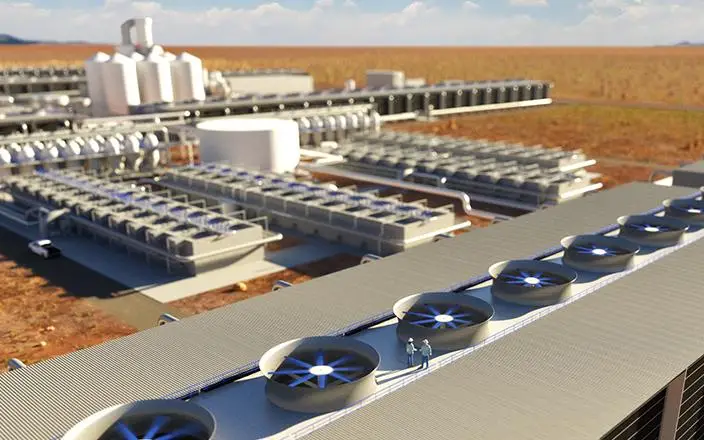Biden Administration Allocates $1.2 Billion for Carbon Capture Projects
Two direct air capture (DAC) projects in Texas and Louisiana have been awarded grants by the Department of Energy, totaling up to $1.2 billion. These projects have the objective of annually eliminating over 2 million metric tons of carbon dioxide from the atmosphere, which is comparable to the emissions produced by approximately 445,000 gas-powered cars. Additionally, the Department of Energy highlights that these initiatives will generate 4,800 well-paid job opportunities.
DAC uses a chemical process to separate carbon dioxide from the air. Plants can then store the carbon dioxide underground or put it in carbon-rich products like concrete that prevent the gas from escaping back into the atmosphere.
These are the first commercial-scale DAC projects in the United States. According to the DOE, they can each remove more than 250 times more carbon dioxide from the atmosphere than the current largest DAC site. Occidental Petroleum subsidiary 1PointFive and its partners are building a Texas production facility. The company’s CEO says that when the project is fully operational, it has the potential to remove up to 30 million tons of carbon dioxide from the atmosphere per year.
The two projects are the first choices for a regional direct aerial capture center funded by the bipartisan infrastructure bill. The goal of the program is to mitigate the effects of climate change by developing a nationwide set of large carbon removal sites that work in harmony with other emission reduction measures.
The DOE says that when DAC technology is scaled up enough, it could help the U.S. reach its goal of neutralizing emissions by 2050. However, as Reuters points out, to achieve the level of scale needed for DAC to have a large enough impact globally, it will be necessary to reduce costs quickly.
To that end, the agency has announced several efforts to bring the cost of DAC below $100 per tonne of carbon dioxide equivalent by the end of the 2020s. It funds 14 feasibility studies and five design and engineering studies for earlier-stage projects. There is also a $35 million state procurement program for carbon removal credits.
To achieve the Biden administration’s goal of a zero-emissions economy by 2050, the DOE estimates that 400 to 1.8 billion tons must be removed from the atmosphere and recovered from emission sources each year.




